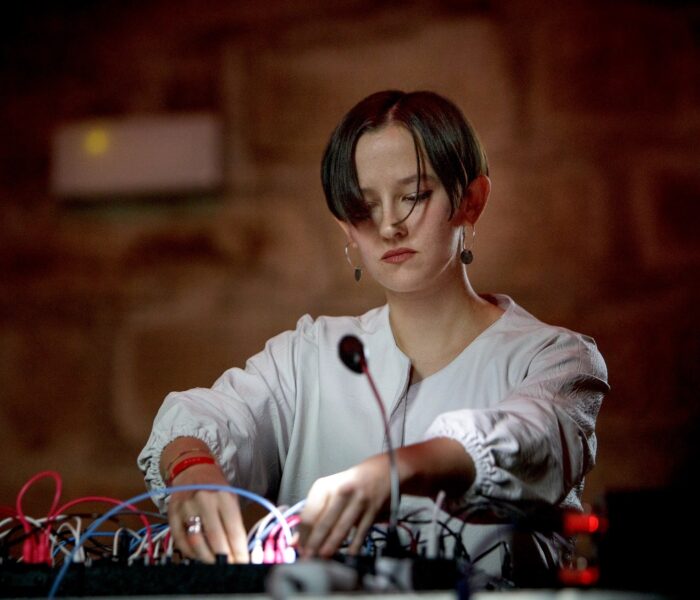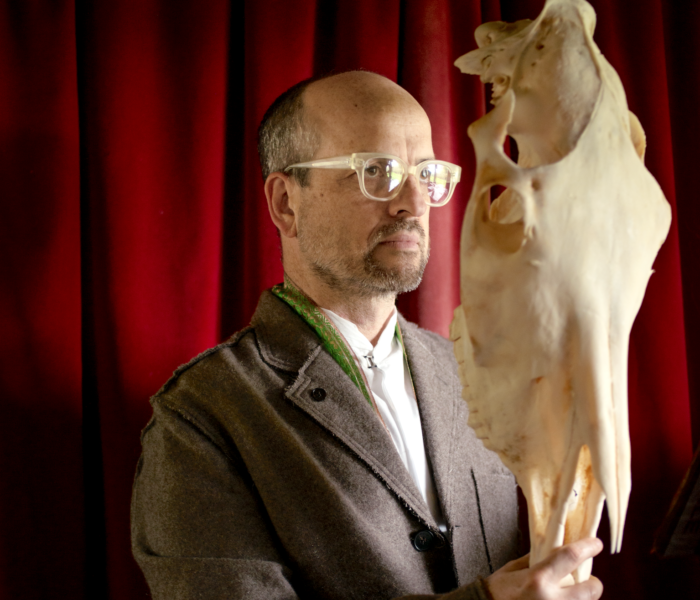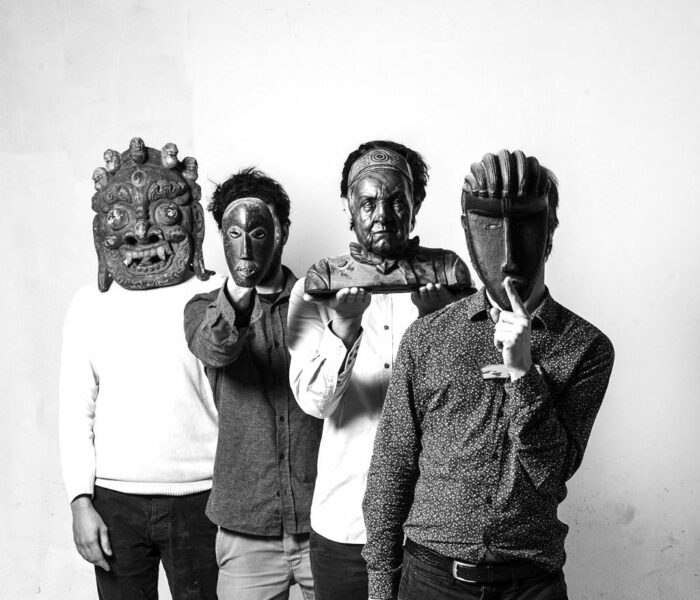Robert Curgenven, Sarah Davachi, Lawrence English, FUJI|||||||||||TA, Kali Malone and Claire M. Singer: little brothers and sisters of Eliane Radigue and La Monte Young, these musicians have one thing in common: they have brought the organ back into fashion. Organic organists, they officiate at the service of a music of stasis that synthesizes minimalism, drone, ambient and sacred music.
End-of-year reviews and rankings are always rather pointless. Especially at a time when the health crisis and pandemic are cutting up the years - much more violently than the usual summer vacation - into a series of segments where notions ofyesterday and tomorrow, ofbefore andafter, become so fluid as to lose all consistency.
Nevertheless, it's worth noting that in the field of what we'll call experimental electronic music - that is, music in which the works are recorded rather than written down - and more specifically in the genre that drone music has become, two of the finest records released in recent months (in 2021, that is) have given pride of place to an instrument usually associated with sacred and written music. That instrument is the (pipe) organ; and the records in question - Antiphonals by Canadian Sarah Davachi (b. 1987) and Observation of Breath by Australian Lawrence English (b. 1976) - are the latest in a "heavier" trend that dates back to 2016-17. A heavier, more global trend, since it brings together, in addition to another Canadian - Kara-Lis Coverdale (b. 1987, organist at St. John's Evangelical Lutheran Church in Montreal) - and another Australian - Robert Curgenven (b. 1974, based in Ireland) - the American Kali Malone (b. 1994, based in Sweden), the Japanese Fujita Yosuke, aka FUJI||||||||||TA, and the Scottish Claire M. Singer. A family - and we're certainly forgetting some - that's scattered, but whose home base could be in Switzerland, and more precisely in Lucerne, home to the very active independent structure Hallow Ground, which has published several of these musicians...
Instrument-world
What can we read in this return to the organ? Is there anything to read into it at all? What does this rediscovery of the organ by young artists, most of whom have had extensive training in electroacoustics, tell us about their approach to the instrument? First, she tells us that the legacy of La Monte Young, who invented static minimalism in 1958 with his Trio For Strings- true minimalism, if we are to believe what Michel Chion and Juliette Garrigues write inEncyclopedia Universalis, based "on slowly evolving continuous phenomena or on micro-phenomena often created by electronic means" - is still spreading.
A heritage filtered - so to speak - by three of Young's most distinguished disciples - glorious elders still going strong, extolling the virtues of this "continuous sound"(drone) which in French translates as bourdon (and is also the name of an organ register also known as "soubasse"):
* Eliane Radigue (b. 1932) was the first to explore continuous sound, and its multiple pyschoacoustic impacts, on a synthesizer, in this case the ARP 2500: Sarah Davachi - who has written a few pieces for solo organ, but prefers to blend the instrument's sonority with a multitude of other instrumental textures, acoustic or synthetic (including the ARP 2500) - wrote about it last year on thequietus.com, along with the Alvin Curran of Songs & Views from the Magnetic Garden, as one of his favorite sources of inspiration.
* Phill Niblock (b. 1933), who experimented with the powers of microtonality on a wide variety of instruments: his organ music - two noisy, magmatic, hallucinatory pieces - was recorded in 2019 by Hampus Lindwall.
* Charlemagne Palestine. Born in 1947, from the early 1970s onwards he directed his quest for the "Golden Sound" towards the piano and the church organ, as witnessed by Schlingen Bängenpremiered in 1978-79.
These three figures are spontaneously summoned by the ever erudite Lawrence English. The two pieces that make up Lassitudehis first organ opus, already recorded on the instrument housed in Brisbane's Old Museum, are dedicated to Radigue and Niblock. As for Observation of Breath, it is placed, in his own words, under the seal of the "maximum minimalism" dear to Palestine. Claire M. Singer, meanwhile, has commissioned works by Éliane Radigue and Phill Niblock for Organ Reframed, the festival she organizes at London's Union Chapel, where she works as an organist...
It's true that the organ is a vintage, "life-size" synthesizer. A world instrument, incorporating all sounds. As we all know, everything eventually finds its way into the organ.
Organists
This young generation may be attached to history, but their approach to the organ is nonetheless uninhibited and intuitive. Which is not to say that they aren't erudite or thoughtful, or that they don't question the "cultural" (essentially religious) charge that remains attached to the instrument, and the way in which it should be played...
Kali Malone, for example, explains that she prefers the dry sound of a conservatory hall to the reverberant acoustics of the places of worship where organ records are generally recorded. This quest for neutrality extends to her playing, since she also claims to record each of the voices of her "canons" successively, in monodic fashion, rather than playing the notes simultaneously, in a polyphony of chords where the sensibility - even the sentimentality - of the performer would risk getting the better of her...
It is perhaps this appearance of objectivity, this restraint that characterizes these musicians in their approach to an instrument that attracts them, perhaps because it combines the richness and plasticity of sound with an incomparable physicality. This notion of physicality is at the heart of Robert Curgenven's work. But it's also obvious when listening to records by Kali Malone or FUJI||||||||||TA, when listening to the aeolian and telluric breath produced by the pipes, to all those noises that the organist is inevitably condemned to emit when operating the pedals or registers. Integrated into the recording, all these "parasitic" sounds, which highlight the contrast between the instrument's demiurgic power, the immaculate purity of this sound and the fragility of the performer, and which also accentuate the chamber music, intimate dimension of the ensemble, make listening all the more thrilling. They lend added subtlety to these buzzing timbres, whose ceaseless iridescence is like a small epiphany, inviting us to return to the place from which we should never stray too far: ourselves. And that only makes these combinations of notes all the more fascinating, where the harmonics become so fluctuating that they end up losing all consistency...
David Sanson



)



